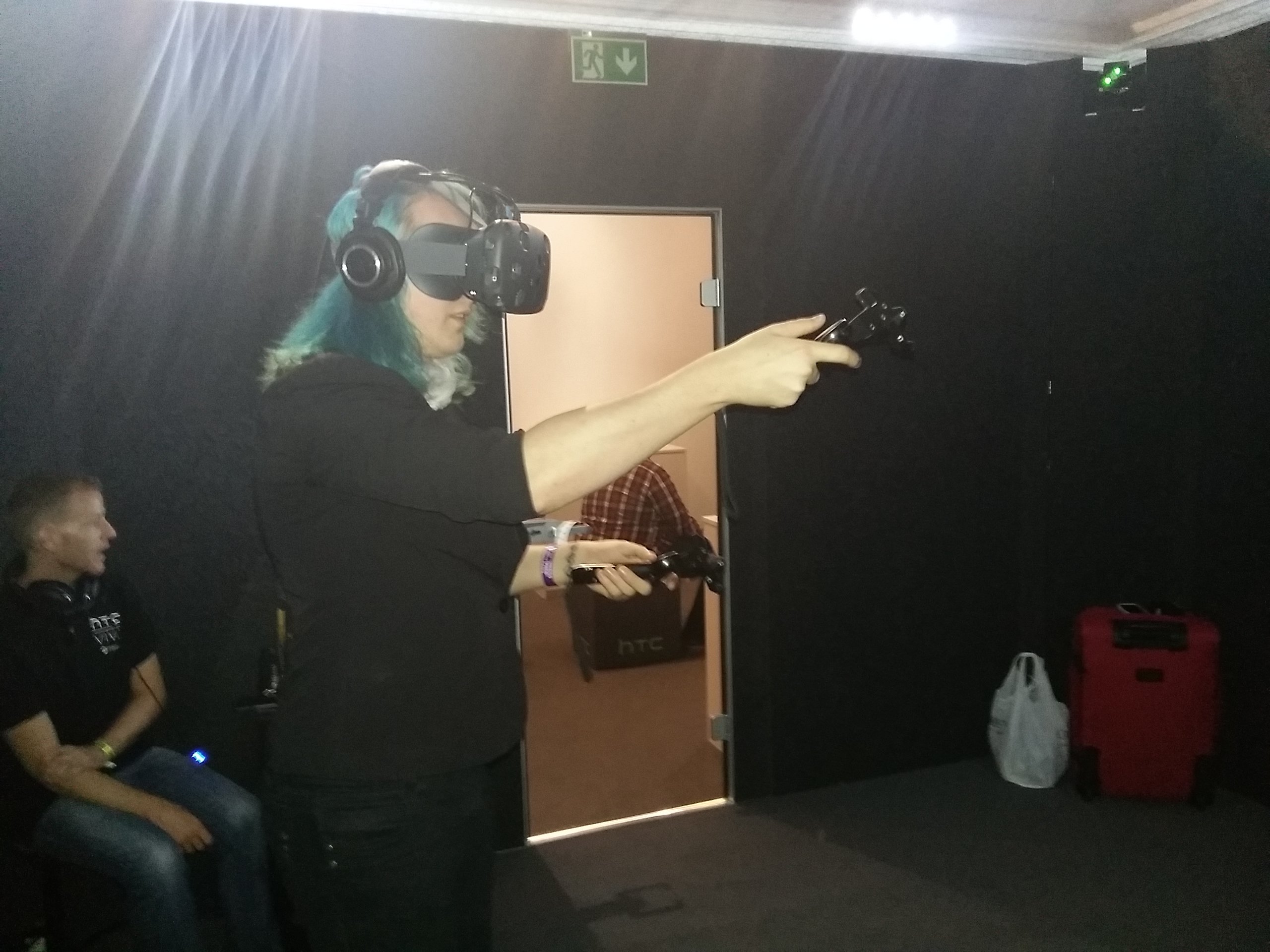Virtual surfaces, real problems
With the impending release of retail VR headsets early next month, I’ve been working out how to rearrange my house to accommodate room-tracking technology. Moving tables, pushing back sofas, securing down TVs, and taking into account how low lights hang from the ceiling.
Still, beyond the cute novelty of discussing room rearrangement, room-scale VR is already starting to show some serious associated risks. Even if you think you’ve VR-proofed your layout, the blending of physical and virtual spaces means a whole host of unexpected dangers are waiting to trip up consumers.
Last week a child fell over, harmlessly, by trying to lean on a desk that did not exist.
I have watched grown adults drop the controllers on their Vive development kits by attempting to put them down on virtual surfaces and having them fall to the floor.
I have seen pets stepped on and children bashed around the head.
While the HTC Vive does have a solution that allows you to see a camera view of the real world while wearing your headset, I don’t think that changes the fact that introducing room-scale VR into consumer homes is going to showcase a lot of issues previously written off as unimportant barriers to the technology.

It is an incredibly immersive experience, but there’s a reason it’s showcased in large, featureless, empty rooms. I know it sounds silly, like I’m suggesting gamers can’t tell the difference between VR and reality, but humans struggling to adapt to altered physical rules is a demonstrable issue.
Astronauts who come home to earth drop objects, forgetting that gravity effects them. VR comes bundled with a similar perception-based problem. It’s tough to change your instinctual reactions to the world around you.
Not being able to track the behaviors of children and pets puts both you and them at risk. Emulating the position of your hands and controllers in a virtual space can fool the brain into instinctively treating the digital work as an extension of the physical world.
It’s probably going to seem funny at first, but as time goes on videos of kids getting nose bleeds because they got hit with a controller or adults falling through a virtual table and breaking their wrist are going to stop being funny anecdotes, and become cautionary tales shared by the mainstream consumer.
If virtual reality technology takes off, is this going to alter the way we treat media rooms? Are we going to see family and pets shut out the VR room for their safety? Real-life preview windows permanently visible in the display for safety over immersion?
I honestly don’t know what the solution to this problem is yet, but I do think that, come next month, this is going to be a topic people need to have answers for.


